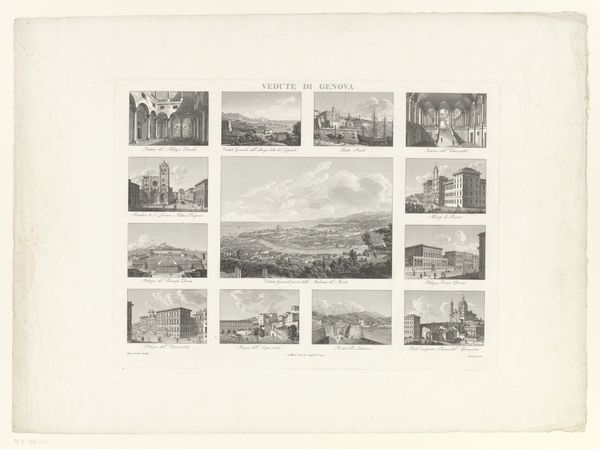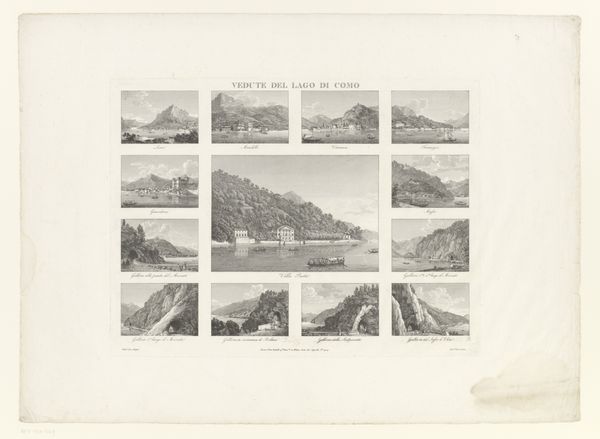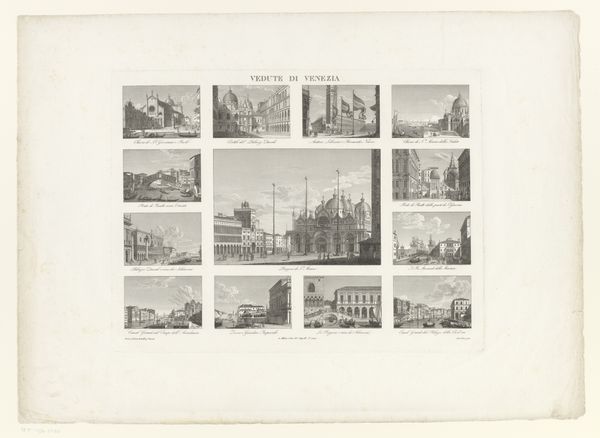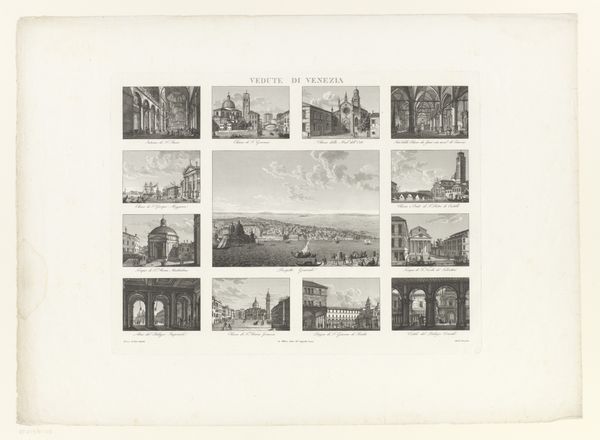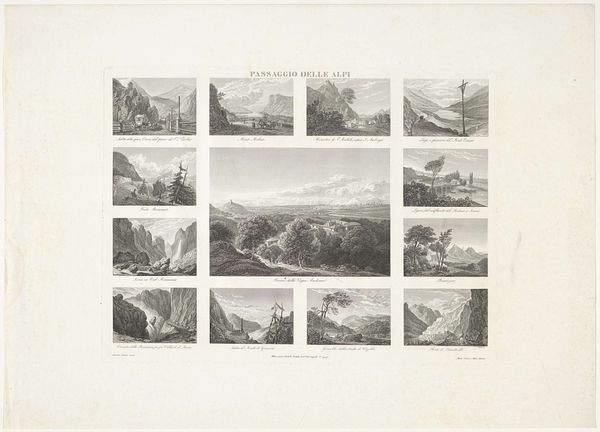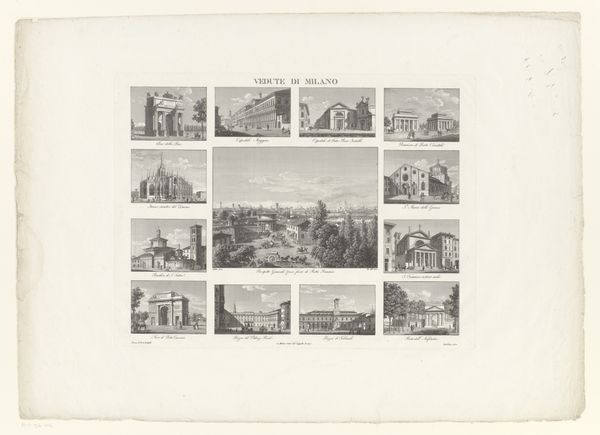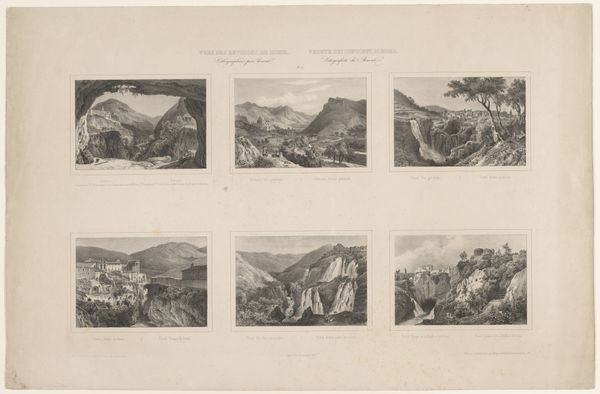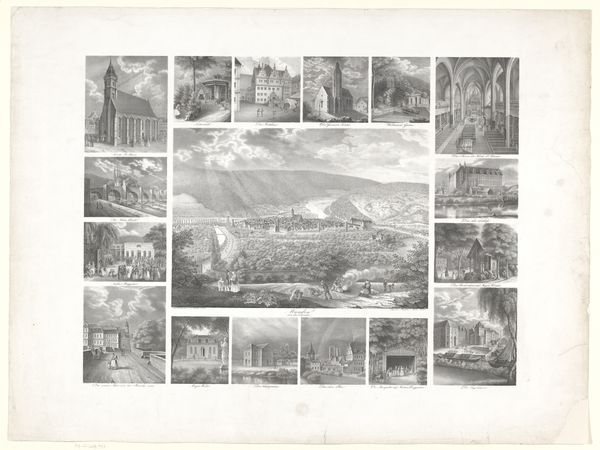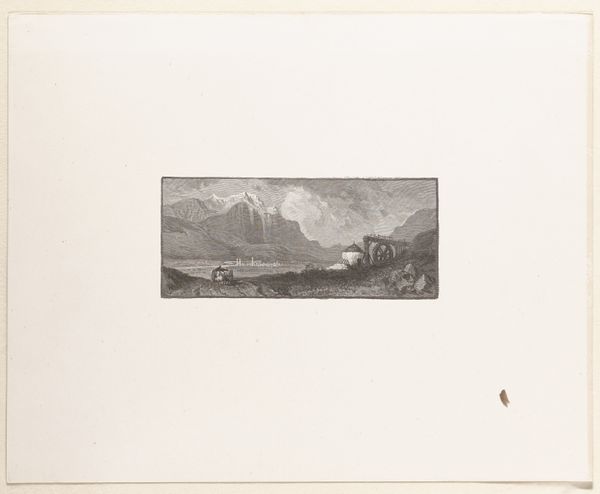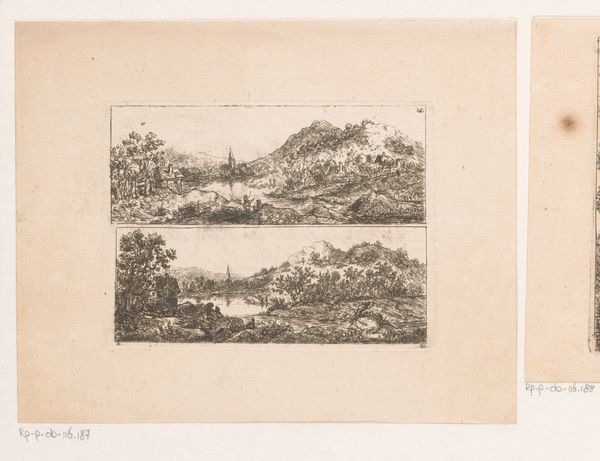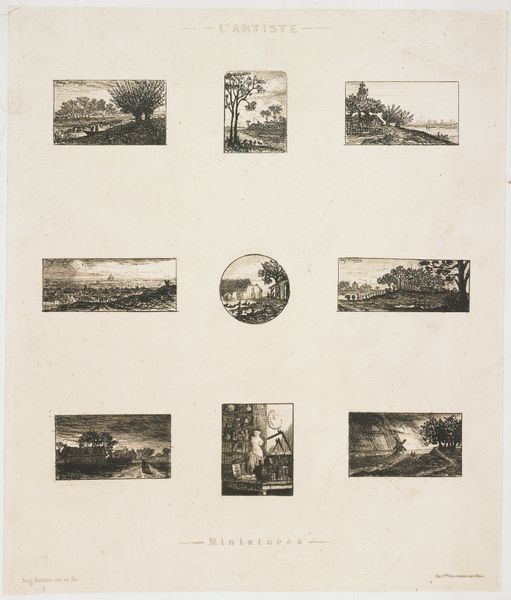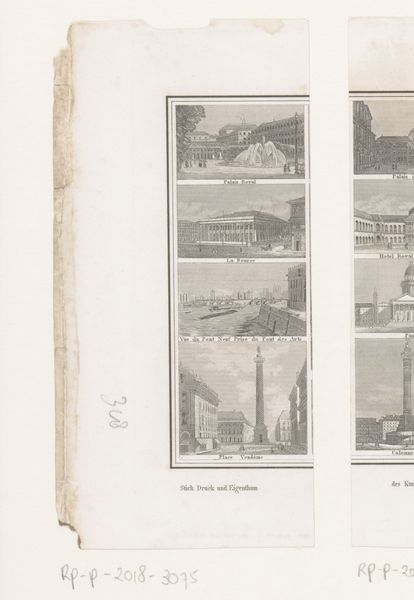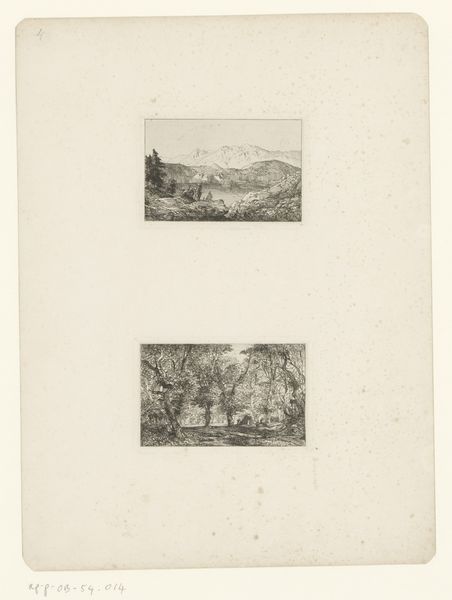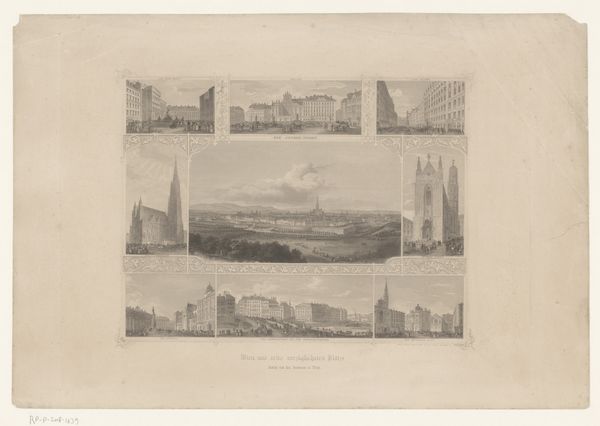
print, etching, engraving
#
neoclacissism
#
lake
#
16_19th-century
# print
#
etching
#
old engraving style
#
landscape
#
geometric
#
cityscape
#
italian-renaissance
#
engraving
Dimensions: height 334 mm, width 445 mm
Copyright: Rijks Museum: Open Domain
Curator: This is "Vedute del Lago di Como," a print dated from 1794 to 1830, housed right here at the Rijksmuseum. What strikes you about it? Editor: Initially, the compartmentalization. It feels like a set of postcards from a grand tour, neatly arranged. The grayscale palette adds a certain austerity, a calculated detachment from the landscape's inherent beauty. Curator: Precisely. The very title, "Vedute," or "views," aligns it with the Italian tradition of precise, almost cartographic landscape art that flourished in the 18th and 19th centuries, fueled by the rise of tourism and a desire to capture and possess picturesque locations. Think of Canaletto's Venice. Editor: The composition in each small engraving reinforces this idea. There's a clear foreground, middle ground, and background, each carefully delineated. Note how geometric architectural forms are interspersed amongst them, suggesting human dominance over nature, quite characteristic of Neoclassical aesthetics. Curator: Absolutely. The geometric element reflects that same era's emphasis on order and rationality. Churches and villas are positioned within the landscape, symbolizing control, wealth and an appreciation of 'sublime' beauty found in cultivated nature. Each of these elements subtly echoes cultural ideals prevalent at that time. These were potent signifiers for the artwork's intended audience. Editor: Are you suggesting it served as a souvenir, more than, perhaps, a meditation on place? Curator: In part, yes. It's both a memory object and a symbolic declaration. Lake Como, framed and tamed, reflecting a sensibility deeply rooted in its era. A demonstration of both aesthetic and actual access. Editor: Well, framed by that historical lens, I can better appreciate its layers. Initially, its reserve felt… well, reserved. Now I read it as a very curated expression of a specific time and class. Curator: The landscape contains encoded ideas, and once deciphered, it provides a more resonant echo of the past. Editor: I suppose that opens the view quite considerably.
Comments
No comments
Be the first to comment and join the conversation on the ultimate creative platform.
